Written by Darby (staff writer at CGN) and Chris Eccles (Technical Lead at Seawater Solutions)
According to The United States Department of Agriculture estimation, 10 million hectares (ha) of land suitable for farming is lost every year, worldwide. Only in Europe, approximately 6.7 million ha of soils are affected by salinisation and 72 million ha were considered sodic in the early 1990s. Most of the common crops are salt-sensitive and cannot tolerate the soil salinity, therefore, these marginal land areas can no longer be utilised for traditional farming.
Seawater Solutions was founded in 2017 to address the issues of ecosystem loss, salinisation, and the erosion of livelihoods faced by coastal communities around the world. Their work began when they became aware of these, when they noticed rising levels of salt-affected land in Scotland’s coastal areas, in addition to the counterintuitive issue of droughts in the region.
Many people envision Scotland as an area of the planet that has plenty of rain, and this is what agricultural systems have been designed to expect. However, with climate changes, there is now comparatively little rainfall for crop irrigation during the summer months as well as seawater encroachment in coastal areas. Therefore, the lack of fresh water, teamed with saltwater intrusion, increasing evapotranspiration rates, coastal erosion, and increasing areas of degraded and salinised soils induced by climate change led Seawater Solutions’ to begin experimenting with the concept of saltwater agriculture.
Saltwater agriculture has been tried and tested before – mostly in more arid climates – and this was spearheaded by the atmospheric physicist Carl Hodges who took the concept to developing countries to try to stimulate the local and regional economies using what appear as degraded or underutilised resources, i.e. degraded land and salt water.
Learn more on what his team achieved in Eritrea HERE
The concept of revitalising unproductive land and using the abundancy of seawater as Seawater Solutions’ irrigation source to grow high-value salt-tolerant crops (halophytes) such as Salicornia was Seawater Solutions’ entry point into the field of Saltwater Agriculture.
Seawater Solutions’ journey started after setting up their first farm in Ayrshire just outside the coastal town of Girvan. The farmer there was struggling to grow conventional crops and agreed to let Seawater Solutions try growing samphire, taking water directly from the sea and applying it to degraded soils. That year they were able to achieve a rate of about 30 tonnes/ha of samphire which Seawater Solutions took to local markets and restaurants in Glasgow and sold for around £20 per kg – all without a drop of freshwater used!
Following on from this Seawater Solutions went on to deliver several overseas projects, first in Ghana and Malawi through DFID (now FCDO), then Vietnam with USAID, and Bangladesh with WFP. They said it made sense to take these approaches and bring them to regions which have enormous stress on freshwater resources, and figure out how this type of saltwater agriculture could help local communities stimulate their agricultural economy which has been disproportionately affected by climate change effects by farming in a different way using resources most see as unusable. Of course here the market for these crops is going to be different than the market in Scotland, and the focus is much more on feed for livestock and aquaculture.
However, due to severe droughts, much of the grazing land has dried up and communities have nothing to feed their livestock, which are the main source of revenue for family income in these areas. Therefore, the only options farmers have is to buy expensive imported feed from other countries like Zambia or South Africa or move away from the rural community in search of work in the larger economic centres.
Pressures In the Agricultural and Food Industry
The Food and Agriculture Organization of the United Nations stated in a 2015 report that 1 billion hectares of the world’s surface are sodic or salt-affected (salt concentration greater than 500 mg/L) soils. The area increases continuously due to unsustainable agricultural actions and land use, as over-irrigation with fresh water increases soil salinity and irrigation water is also taken from limited and vitally important freshwater reservoirs. Additionally, many sectors are looking to implement the green transition and are struggling with practical methods.
From Bangladesh to Spain Seawater Solutions has seen first-hand that large landowners and small-scale farms are putting their businesses under extreme pressure by land becoming unproductive due to salinisation and the loss of freshwater resources. Therefore, the future of food security must adapt, which means working with the difficult conditions that have become a reality.
Feed costs for livestock and aquacultures have fluctuated wildly in the past years, resulting in unfavourable conditions for farmers and producers worldwide. In many African countries, the price of livestock feed or aquaculture feed has driven producers out of the market, and in some cases resulted in millions of dead livestock such as in Namibia and Kenya in 2022. In Northern Kenya and Namibia, the cheapest quality straw/hay (lucerne, grasses) feed sells for around $0.20 per kg, though seasonally and drought-dependently goes up to $1.10. Both of these costs are too high for many farmers in the region who typically depend on grazing when it is available. These feeds are typically imported or transported at great distances. In Namibia, feed typically comes all the way from Zambia during periods of drought, driving up already high prices.
Working in depleted environments is challenging, therefore the conservation of nutrients within an agriculture system is crucial. So, Seawater Solutions wants to put more onus on both the circular economy and waste valorisation within their operations. To do this, Seawater Solutions builds closed-loop systems which recycle nutrients and process waste material for secondary use in another stage of the process. Examples of this are:
- The waste straw section of the plant undergoes pyrolysis to produce biochar which can be directly applied back into the agriculture field to assist in nutrient transfer, increasing water retention in soils, and storing carbon in the soil.
- Biomass can undergo energy from waste treatment to produce biogases which can be a fuel source for operations and transport requirements.
- The manure from livestock subsiding on the halophyte feed is applied to the field as a fertiliser.
How Does Saline Agriculture Work & Can It be Implemented Everywhere?
Firstly, let’s distinguish between saline agriculture and saltwater agriculture, as the two are often used interchangeably.
Saline agriculture focuses more on taking varieties of conventional crops and breeding salt tolerance into them, such as lettuce, tomatoes, carrots, potatoes, rice etc. They can then be grown in soils which have salinity issues and irrigated with brackish water. This field is pivotal to the future of food security and is led by groups such as The Salt Doctors based in the Netherlands.
Saltwater agriculture works on the more severe end of the salinity scale, working with both soil and water where generally the only plants which can survive are various halophyte species. Most of these species are found naturally in tidal ecosystems and saltmarshes where they are twice daily inundated by tidal seawater. They are wetland crops and thrive under the extremely harsh conditions of a high salinity, low oxygen environment. These plants exist as both perennials and annuals and such species include Salicornia, Sarcocornia, Suada maritima, Batis maritima, Cordgrass, Sea aster, and Sea purslane. With Seawater Solutions, they can install work in both coastal and dryland ecosystems.
The use of halophytes for both culinary and medicinal purposes dates back thousands of years, however at present, they are primarily grown indoors to supply the European and American food markets, often found in health food stores and high-end restaurants, but little elsewhere. As such the potential of halophytes has not yet been realised as these species are rich in specific primary and secondary metabolites which when processed and extracted can produce a wide range of key products such as; food, feed, feed additives, nutraceuticals, cosmetics, pharmaceuticals, functional materials, natural antimicrobials and corrosion inhibition, and biofuels.
Seawater Solutions builds their systems to supply both the local and export markets which can address both the primary needs of the local community e.g. biomass for livestock feed and waste material which are processed for value-add products by our partners who operate biorefining technology to extract the bio-active compounds needed for the pharmaceuticals and cosmetic export markets.
Seawater Solutions In Malawi
Seawater Solutions’ project in Malawi was a real push forward in what is achievable with saltwater agriculture. As Malawi is a completely landlocked country, the team were brought to the rural lowland region of Chikwawa where 80% of boreholes drilled to provide the community with fresh water yielded saline water. The boreholes had tapped saline aquafers and were therefore useless and dangerous for the health of both humans and animals.
It was here using this salty water to grow coastal crops thousands of kilometres from the coastline that the Seawater Solutions team saw the far-reaching potential to sustainably produce animal feed during drought conditions. A step further was to integrate their saline agriculture system with the local saltwater aquaculture production; taking the wastewater of the aquaculture system which is nutrient-heavy and using it to flood their halophyte fields. This circular system reduces the pollution from aquaculture sources as the wastewater is put through Seawater Solutions’ constructed wetland (a common remediation strategy for wastewater) and the heavy nutrient loading from the water behaves as an in-built fertiliser for the crops.
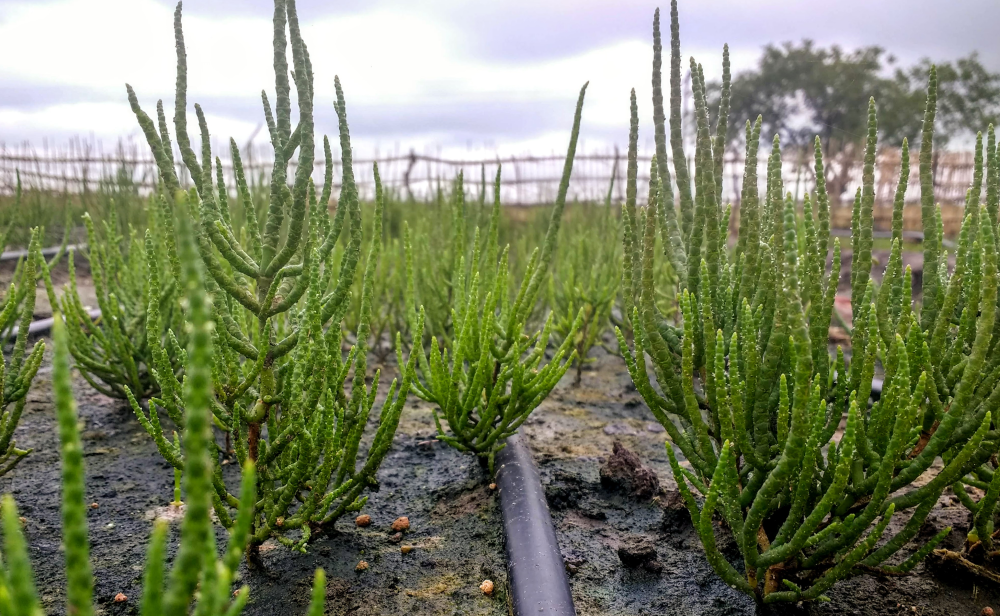
The first known halophytes to be grown in Malawi. Working with Challenges Malawi, hundreds of miles from the coast Seawater Solutions used salty ground water to grow Salicornia on previously fallow land
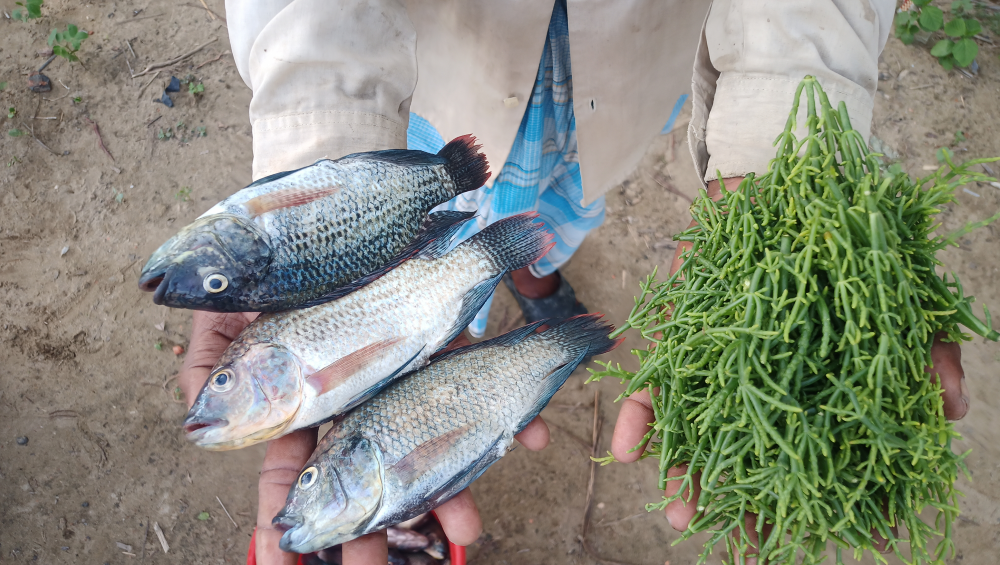
The main aim was to try and develop a halophyte feed which could supplement the local aquaculture industry. Previously farmers used rice bran as a feed or bought expensive feeds from Zambia when they could afford it.
Working in Malawi on these solutions is what led Seawater Solutions to further explore dryland regions such as the interiors of Kenya and Namibia.
NARA Climate: Blue Agri-Carbon Projects In Spain, Kenya, Pakistan & Namibia
Farming salt marsh ecosystems in deserts and degraded soils are among the top carbon removal approaches. It captures 10 times more carbon than forests and 30 times faster by locking up carbon in soils rather than biomass. This allows the biomass to be harvested for agricultural purposes for added value.
The first phase of the project involves four separate projects (Kenya, Spain, Pakistan, and Namibia) totalling 32,000 ha. This selection of sites is either already secured and operational or in negotiation with respective government bodies and landowners.
Spain
Seawater Solutions’ project in Trebujena is a 300-hectare former saltmarsh sitting along the Guadalquivir River which was drained during the early 1900s for agriculture and was soon abandoned due to salinity issues and has since only been host to a small number of cattle that graze on wild saline plants. Since 2017 the landowners have been exploring restoration projects with the Government of Andalucia, and this led to the EU-funded restoration project that is currently underway and expected to be finished by June 2023.
Since April 2021 Seawater Solutions has been collaborating with the landowners and the Government of Andalucia in exploring an integrated project that encompasses the restoration objectives, blue carbon, and blue economy opportunities for local development.
The project seeks to spearhead new and holistic approaches to wetland restoration that have little precedent globally yet are highly scalable across global geographies in which saltmarsh wetlands are found. The Blue Economy models developed for this project can be implemented in many countries of the world facing similar challenges; from Spain to Namibia, Bangladesh to Mexico, and the United States to Australia. The prevalence of degraded saltmarshes around the world, along with the need to transition salt-affected farmland towards regenerative approaches makes this solution highly scalable.
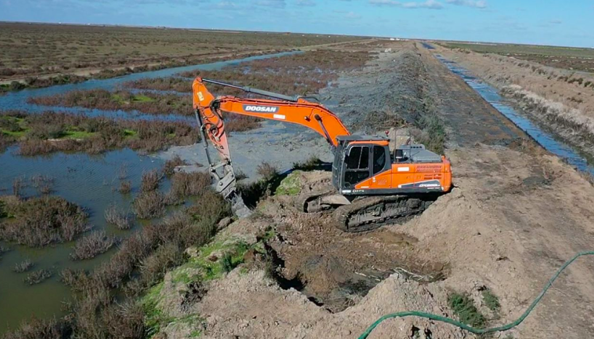
The undraining of saltmarshes for integrated agroecology, combining saltmarsh restoration with ecosystem-based agriculture
Kenya
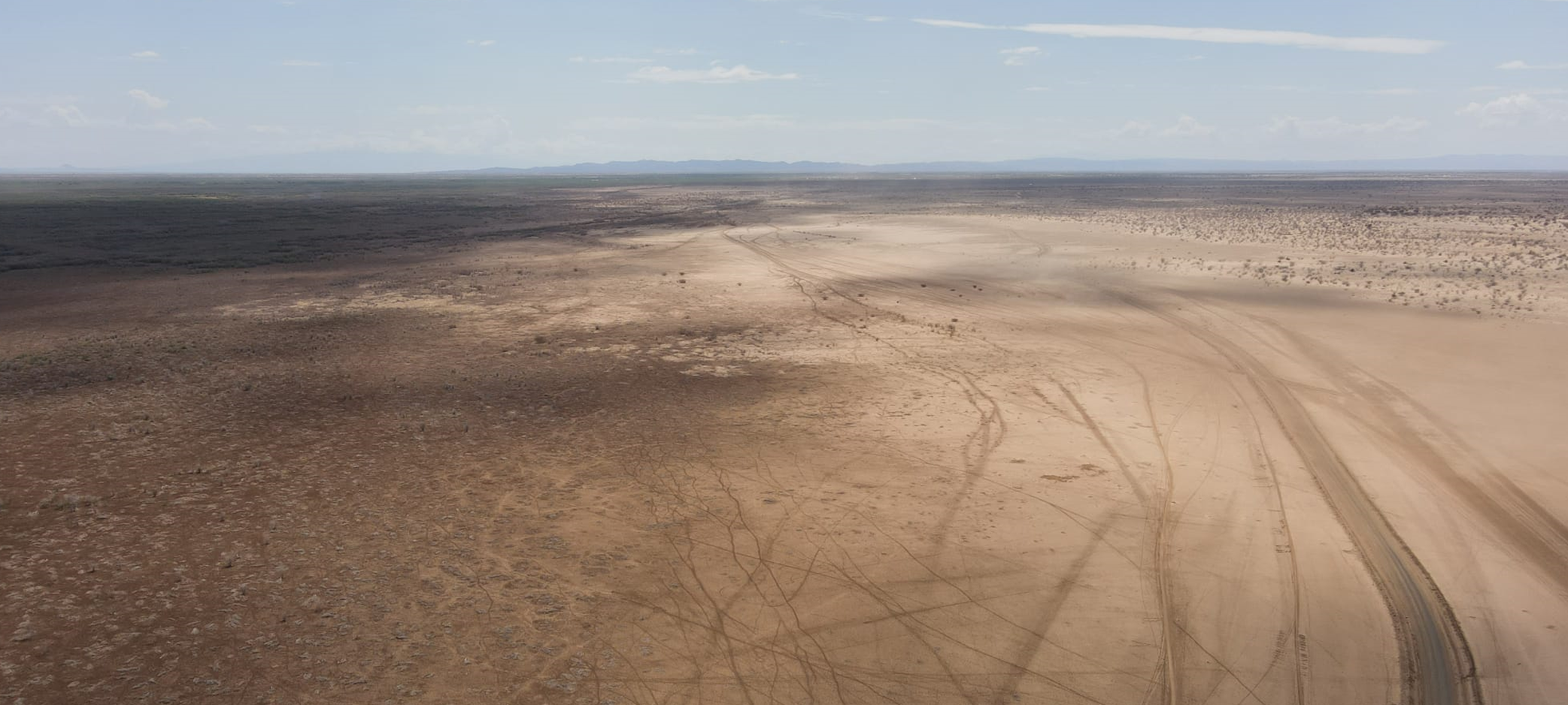
In the vast plains of Turkana, vegetation has been mostly wiped out due to lack of fresh water, and local pastoralists walk their livestock hundreds of miles, often across borders in search of pasture, the survival rate is below 50%.
The 10,000-ha proposed site in Kenya sits at the shores of Lake Turkana, the largest desert lake in the world. The lake is moderately saline and sits adjacent to regional pastoralist migration routes. The site has access to ample water, with favourable soil conditions. The site has been made available by the devolved Ministry of Livestock and Pastoralism, a key project partner. The World Food Programme is a key stakeholder partner, with existing beneficiaries within the project zone. The operational model will follow our Saline Agriculture for Livestock Transitioning (SALT) approach, locally known as ‘Cow Hotel’, in which a carbon/fodder project will deliver low-cost feed to government-run feedlots.
Pakistan
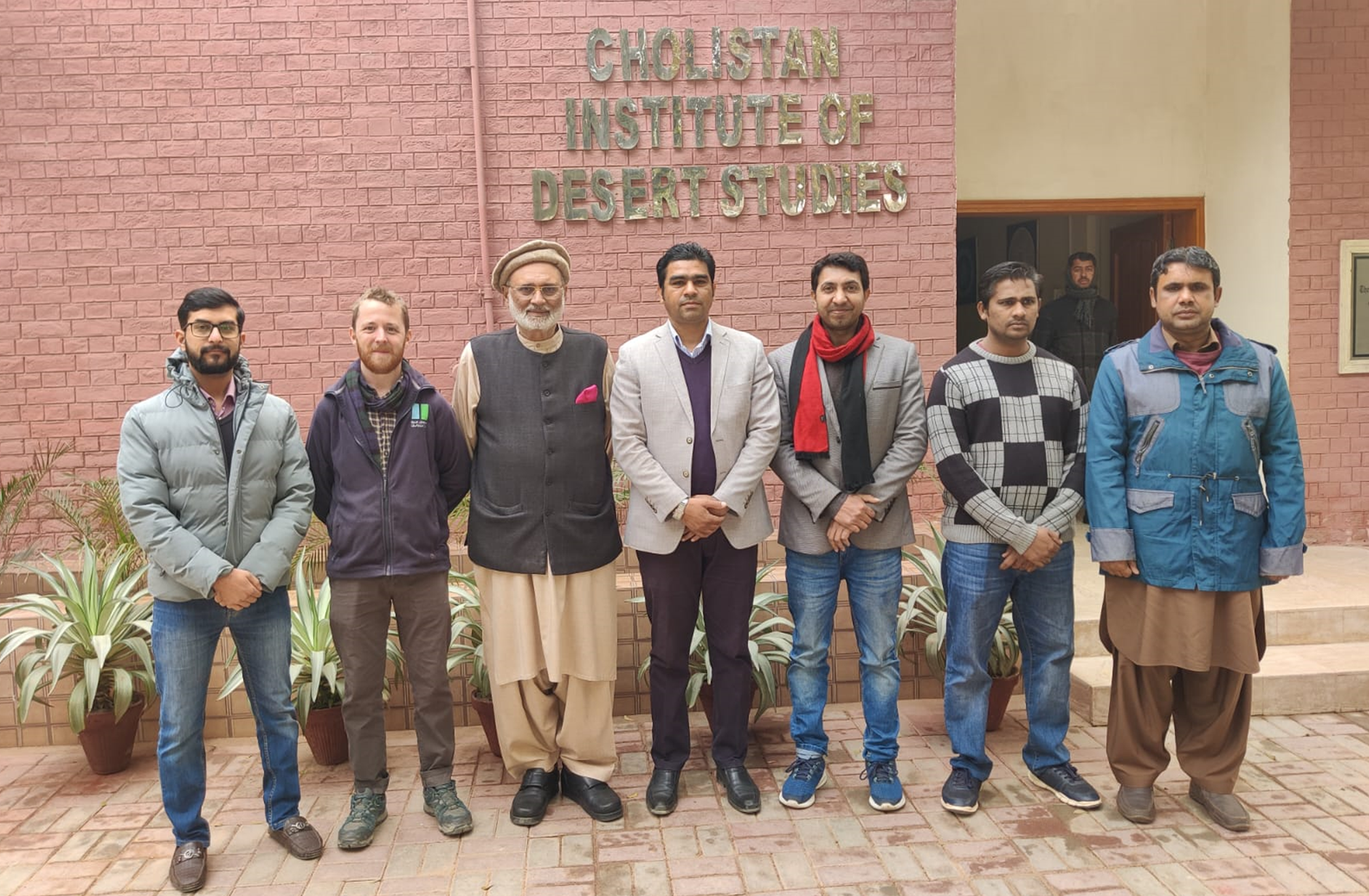
The 10,000-ha proposed site in Pakistan lies in the vast Cholistan desert, under which large rechargeable saline water deposits are located. This SALT operation will draw water from beneath the ground to develop carbon/feed operations for the growing livestock sector in the region. The site has been made available by the regional administration and facilitated by the Desert Research Institute of Desert Studies, part of Islamia University of Bahawalpur, in the area in which multi-year pilot trials have been developed in the desert.
The 10,000-ha proposed site in Pakistan lies in the vast Cholistan desert, under which large rechargeable saline water deposits are located. This SALT operation will draw water from beneath the ground to develop carbon/feed operations for the growing livestock sector in the region. The site has been made available by the regional administration and facilitated by the Desert Research Institute of Desert Studies, part of Islamia University of Bahawalpur, in the area in which multi-year pilot trials have been developed in the desert.
Namibia

Halophytes cultivated in the nursery are developed to an intermediate stage where they will be strong enough to be transplanted into the field where they will grow to maturity. Each plant grows to a bush roughly 1m high by 1m wide. The top third of the plant can be cut and will regrow after 4-6 weeks.
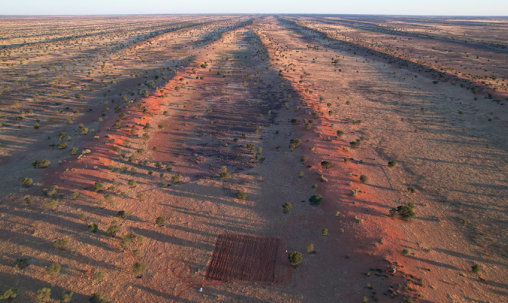
: Seawater Solutions/NARA’s initial pilot site in the Kalahari Desert. This 1ha site sits on a 9000ha parcel of land which is primarily unproductive
The site in the Kalahari similarly sits on top of large rechargeable saline water aquifers. The project is leasing the privately owned site and currently hosts pilot plots since 2020. The SALT operation will equally produce low-cost cattle feed for the large and established Namibian beef market, which has seen significant challenges in sourcing local feed. Namibia is still recovering from a recent drought which lasted eight years, and farmers in the region have abandoned their livestock production businesses as the land can no longer support pasture production for grazing.
Seawater Solutions’ Future Outlooks
In 2021 Seawater Solutions set up its sister company NARA Climate, a spin-off from the company Seawater Solutions. NARA undertakes integrated climate asset projects that combine conventional restoration with agriculture, using saline ecosystems to transform dryland regions from Spain to Kenya and Namibia. The company seeks to trade blue carbon credits on the voluntary market and produces biotech products from biomass regeneratively farmed on its projects.
Seawater Solutions and NARA will work on coastal dykelands (areas of salt marshes historically drained for agricultural use) and drylands (such as the desert ecologies in Kenya and Namibia already mentioned).
In 2024, Seawater Solutions and NARA aim to:
- Work with the government in Turkana to begin trials farms which the regional government had built to produce pasture for the livestock, to be supplied to the pastoralists of rural Turkana – however, the borehole drilled produced salty water and the site currently lies abandoned.
- Build pilot farms in the Kalahari desert with Namibian farmers.
- Engage in several R&D projects to develop our processing strategy and product base. Seawater Solutions collaborates with Halorefine which has built a cascading system which takes the input material of halophyte biomass and through the process of biorefinery can produce a range of high-value products for the market.
- Develop our product range including feeds, bio-based materials, bioactive ingredients, and biochar
- Look into the beginning of live feed trials to test the effects of biomass on both fish species and livestock. Research has shown that the introduction of halophytes into the feed of cattle and sheep improves health and reduces methane emissions.
- Explore other territories in North America and Australia which have some of the largest areas of saline land in the world additionally, large swaths of coastal land which one dammed for agriculture, have now fallen fallow due to salinity issues
Seawater Solutions has emerged as a beacon of hope in the battle against climate-induced agricultural challenges. With a firm understanding of the pressing need for innovative solutions, Seawater Solutions embarked on a journey to transform barren, salt-affected lands into thriving agricultural hubs.
Through pioneering techniques such as saltwater agriculture, Seawater Solutions has demonstrated that even the most inhospitable environments can be harnessed to yield bountiful crops. From the coastlines of Scotland to the rural landscapes of Malawi and beyond, their efforts have revitalised communities and paved the way for sustainable food production in the face of dwindling freshwater resources and escalating salinisation.
Looking ahead, Seawater Solutions/NARA remains steadfast in its commitment to expanding its reach, forging partnerships, and continuing its groundbreaking research to ensure a more resilient and prosperous future for agriculture worldwide.
Do you want to collaborate with or support Seawater Solutions? Learn more HERE.








